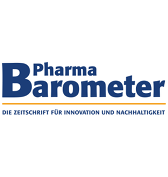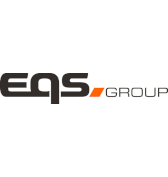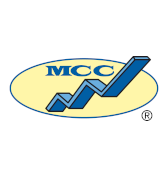DUBLIN–(BUSINESS WIRE)–The “Medical Camera Market – Forecasts from 2022 to 2027” report has been added to ResearchAndMarkets.com’s offering.
In today’s healthcare, medical cameras have become indispensable. Medical cameras are used to capture images and videos for a number of life science applications that require visual documentation. These cameras are widely used in microscopy, ophthalmology, pathology, endoscopy, lab automation, biomedical research, rheumatology, and other disciplines. These products help doctors make precise and suitable interpretations by ensuring correct diagnosis.
Due to increased private funding and investments in healthcare facilities and infrastructure, performance benchmarks are rising to assure better healthcare delivery. Consistent technological advancements, combined with increased use and application of medical cameras, are expected to drive robust market growth throughout the projection period.
Technological advancements in medical cameras coupled with the rising number of surgical procedures are prime factors for the growth of the global medical camera market.
Medical cameras are now required for an increasing number of surgical procedures, a trend that has accelerated in recent years. The rising number of surgeries is due to the world’s increasingly aging population and the surging prevalence of chronic diseases, both of which are driving up the demand for medical equipment. Many countries around the world are grappling with the issue of aging populations. According to the United Nations’ World Population Ageing 2019 report, the world’s population aged 65 and up was 703 million in 2019. The number of senior persons is anticipated to reach 1.5 billion by 2050. Favorable laws by the government and increased investment in research and development further boost the demand for medical cameras globally.
To enhance access to ophthalmic treatment, Samsung Electronics began transforming old Galaxy smartphones into medical diagnosis cameras in India, Vietnam, Morocco, and Papua New Guinea in April 2021. This Galaxy Upcycling program assists in the prevention of about 1 billion cases of vision impairment worldwide, which can be avoided with the correct diagnosis. Similarly, Indago, a manufacturer of medical gadgets, for example, raised USD 10 million in a fundraising round in June 2021. The funds will be utilized to finish pre-submission testing and obtain FDA approval for the company’s ArthroFree wireless camera system.
Furthermore, the growing demand for medical cameras operations has been fueled by an increase in the number of surgeries performed as a result of the rising prevalence of various types of GI cancer. For example, according to Globocan 2020, colorectum cancer accounted for 10% of all new cases worldwide, while stomach cancer accounted for 5.6 percent of all new cases.
Increased production costs, health risks, and a scarcity of educated medical personnel could stifle the worldwide medical camera market’s expansion.
The high cost of medical cameras is a major restraint projected to stifle the global medical camera market’s growth throughout the forecast period. Pictures taken with low-megapixel cameras have many flaws. When zooming in, cropping, or printing such photographs, the image quality suffers.
As a result of the numerous benefits connected with high-megapixel cameras, there is an increase in demand for them. Camera prices vary depending on the number of megapixels, sensor type, and other characteristics. In addition, endoscopy physicians and surgeons are in low supply worldwide. According to the Association of American Medical Colleges (AAMC), there will be a shortage of roughly 1,050 gastroenterologists in the United States by 2020. The country’s demand for colonoscopies is predicted to increase by 10%.
COVID-19 Insights
The COVID-19 pandemic’s breakout and rapid spread have exposed vulnerabilities in healthcare systems globally. Many countries had imposed a temporary ban on elective surgeries in 2020 in order to reduce the risk of hospital-acquired infections for patients and frontline employees, as well as conserve crucial resources.
For example, between March and May 2020, the US government put a temporary restriction on elective treatments in most states. Similar initiatives around the world have resulted in fewer surgical procedures, lowering demand for camera systems. These constraints have resulted in a significant backlog of unfinished surgical treatments in 2020, as well as a large backlog of elective surgeries that have been postponed due to healthcare systems’ limited capacity, which has negatively impacted the market of medical cameras.
Market Segmentation:
By Application
- Endoscopy procedures
- Dental Procedures
- Ophthalmology
- Others
By Sensor Type
- Charged Couple Device
- Complementary Metal Oxide Semiconductor (CMOS)
By End-User
- Hospitals
- Clinics
- Ambulatory Surgery Centers (ASC)
- Diagnostic Centers
By Geography
- North America
- USA
- Canada
- Mexico
- South America
- Brazil
- Argentina
- Others
- Europe
- Germany
- France
- United Kingdom
- Spain
- Others
- Middle East and Africa
- Saudi Arabia
- Israel
- Others
- Asia Pacific
- China
- Japan
- South Korea
- India
- Others
Companies Mentioned
- Medigus Ltd
- Sony Electronics Inc.
- Imperx, Inc.
- Leica Microsystems GmbH
- STEMMER IMAGING AG
- Basler AG
- KARL STORZ
- Med X Change, Inc.
- Carl Zeiss Meditec AG
- 3D Medivision Inc.
For more information about this report visit https://www.researchandmarkets.com/r/ga7wya
Contacts
ResearchAndMarkets.com
Laura Wood, Senior Press Manager
press@researchandmarkets.com
For E.S.T Office Hours Call 1-917-300-0470
For U.S./CAN Toll Free Call 1-800-526-8630
For GMT Office Hours Call +353-1-416-8900



















